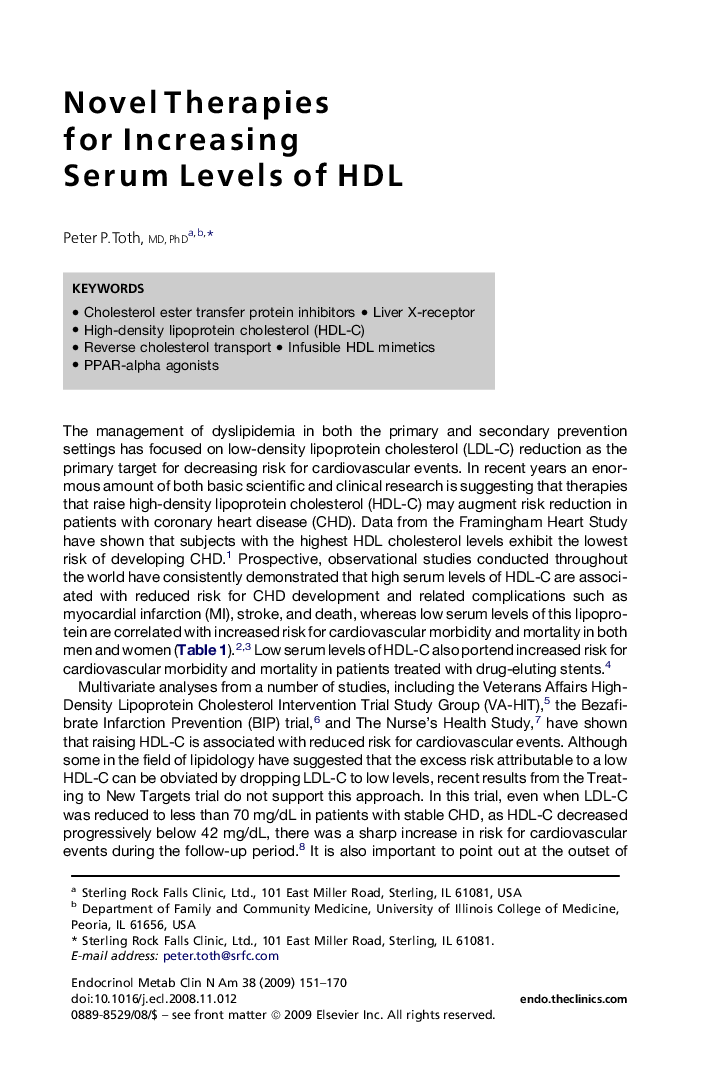| Article ID | Journal | Published Year | Pages | File Type |
|---|---|---|---|---|
| 3268209 | Endocrinology and Metabolism Clinics of North America | 2009 | 20 Pages |
Abstract
The protectiveness of elevated HDL-C against CHD and its long-term sequelae is a subject of intense investigation throughout the world. HDL has the capacity to modulate a large number of atherogenic mechanisms, such as inflammation, oxidation, thrombosis, and cell proliferation. Among lipoproteins, HDL is also unique, in that it promotes the mobilization and clearance of excess lipid via the series of reactions collectively termed “reverse cholesterol transport.” Numerous therapeutic agents are being developed in an attempt to modulate serum levels of HDL-C as well as its functionality. This article discusses the development of newer treatments targeted at raising HDL-C and HDL particle numbers to reduce residual risk in patients at risk for CHD.
Related Topics
Health Sciences
Medicine and Dentistry
Endocrinology, Diabetes and Metabolism
Authors
Peter P. MD, PhD,
